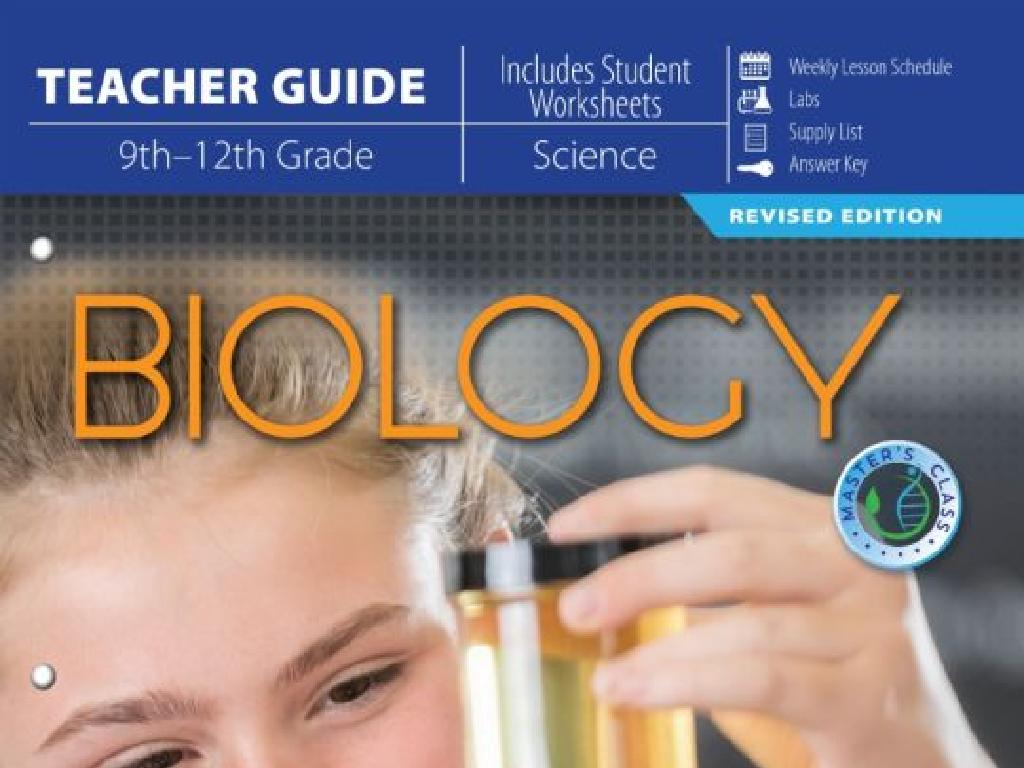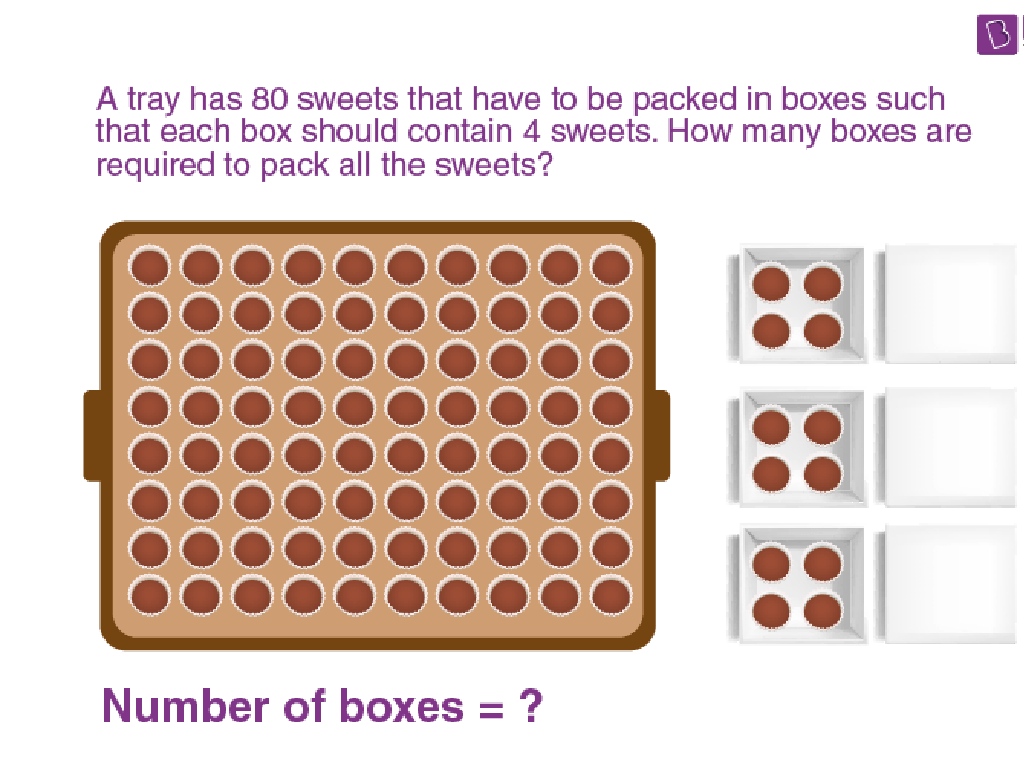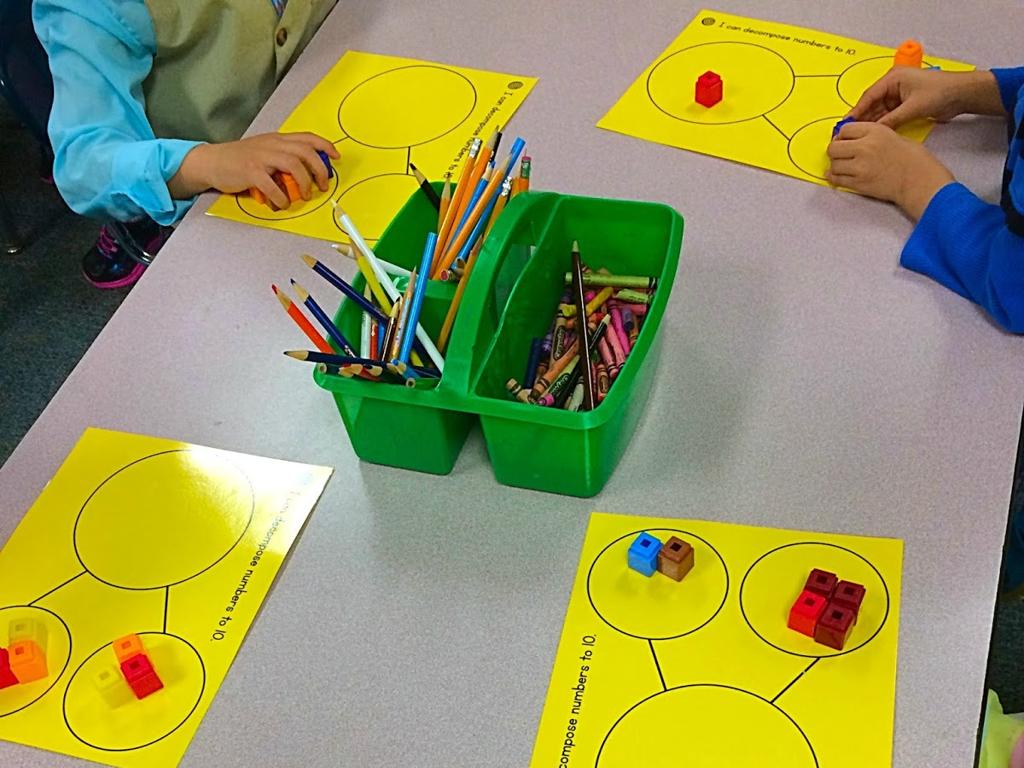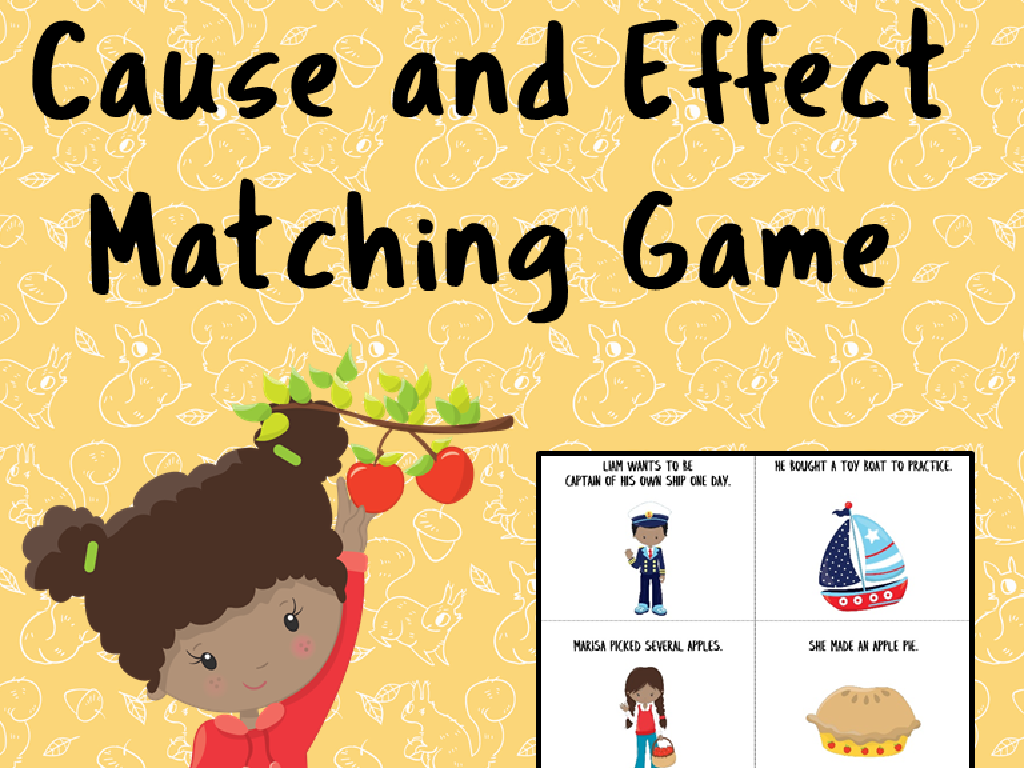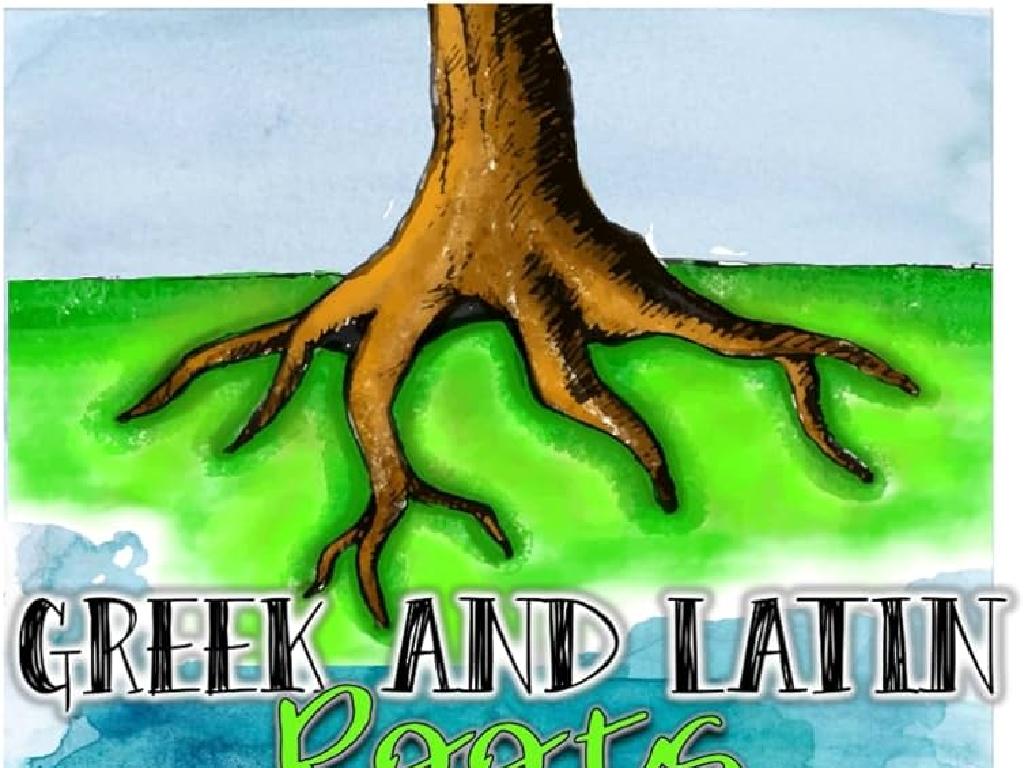Read And Construct Animal Life Cycle Diagrams
Subject: Science
Grade: Fourth grade
Topic: Animals
Please LOG IN to download the presentation. Access is available to registered users only.
View More Content
Understanding Animal Life Cycles
– What is a Life Cycle?
– A series of stages an animal goes through from birth to adulthood.
– Stages of Life Cycles
– Common stages: birth, growth, reproduction, and death.
– Significance of Life Cycles
– Helps us understand how animals grow and change.
– Exploring Examples
– We’ll look at butterflies, frogs, and chickens.
|
This slide introduces the concept of life cycles, which is fundamental to understanding biology and the development of animals. A life cycle encompasses all the stages an animal goes through from the beginning of its life until its death. It’s crucial for students to learn about life cycles to grasp how different animals reproduce and how they can change as they grow. This knowledge also helps in understanding ecosystems and the roles different animals play within them. Use examples like the metamorphosis of a butterfly or the development of a frog from a tadpole to illustrate these concepts vividly. Encourage students to think of animals they are familiar with and consider what stages these animals go through in their life cycle.
Understanding Animal Life Cycles
– What is a Life Cycle?
A series of stages from birth through reproduction to death
– Key Stages: Birth to Death
Birth, growth, reproduction, and death are common stages
– Each Animal’s Unique Cycle
Different animals have different life cycle lengths and stages
– Life Cycle Diagrams
Visual representation of the stages in an animal’s life
|
This slide introduces the concept of a life cycle, which is fundamental to understanding biology and the development of animals. Begin by defining a life cycle as the series of changes in life from birth to adulthood to reproduction and finally to death. Emphasize that while all animals go through a life cycle, each species has a unique pattern. For example, a butterfly’s life cycle includes stages as an egg, caterpillar, pupa, and adult, whereas a frog’s life cycle includes an egg, tadpole, and adult frog. Encourage students to think about the life cycle stages of various animals and how they differ. Introduce life cycle diagrams as a tool for visualizing these stages. In the next class, students can draw or construct life cycle diagrams for specific animals.
Life Cycle of a Butterfly
– Egg Stage: Start of the Journey
– Tiny butterfly eggs are often found on leaves.
– Caterpillar: The Growing Phase
– Caterpillars hatch and eat leaves to grow.
– Pupa: A Time of Change
– Inside the pupa, the caterpillar transforms.
– Butterfly: Completing the Cycle
– Adult butterflies emerge to lay eggs.
|
This slide introduces students to the four stages of a butterfly’s life cycle. Begin with the egg stage, explaining how and where butterflies lay their eggs. Move on to the caterpillar stage, emphasizing their rapid growth and need for food. The pupa stage is a time of transformation, where the caterpillar becomes a chrysalis and undergoes metamorphosis. Finally, discuss the adult butterfly stage, where the butterfly emerges, mates, and lays eggs to continue the cycle. Use diagrams to illustrate each stage. Encourage students to think about how each stage is necessary for the butterfly’s survival and how it ensures the continuation of the species. Provide examples of local butterflies if possible, and consider bringing in a live example or arranging a field trip to a butterfly garden for a practical learning experience.
Life Cycle of a Frog
– Frog life begins as eggs
– Frogs lay clusters of eggs, called spawn, in water.
– Tadpoles: Frogs’ baby stage
– After hatching, the tadpole lives in water, breathes with gills, and has a tail.
– Metamorphosis: Tadpole transforms
– The tadpole grows legs, loses its tail, and develops lungs to prepare for land.
– Adult Frog: The mature stage
– The adult frog can live on land and water, breathes with lungs, and can reproduce.
|
This slide introduces the life cycle of a frog, which is a classic example of metamorphosis in animals. Start by explaining that the life cycle of a frog has distinct stages, beginning with eggs laid in water. These eggs, or spawn, hatch into tadpoles, which are entirely aquatic. As tadpoles grow, they undergo metamorphosis, where they develop legs and lungs for life on land, and their tails recede. Once metamorphosis is complete, they become adult frogs, capable of living both in water and on land, and the cycle begins anew when they lay their own eggs. Encourage students to observe the changes in body structure and habitat preference at each stage. This understanding of life cycles can be applied to other animals and is fundamental in the study of biology.
Comparing Animal Life Cycles
– Similarities in life cycles
– All animals are born, grow, reproduce, and die
– Differences in life stages
– Some have few stages like mammals, others many like insects
– Reasons for varied stages
– Depends on the animal’s environment and adaptation
– Mammals vs. Insects vs. Amphibians
– Compare a frog, butterfly, and human life cycle
|
This slide aims to help students understand that while all animals go through a life cycle, the number of stages and the specific processes can vary greatly. Start by discussing the universal aspects of life cycles, emphasizing birth, growth, reproduction, and death. Then, explore the differences, such as the metamorphosis in insects and amphibians compared to the more direct development in mammals. Explain that the complexity of life cycles is often related to the animal’s habitat, survival strategies, and evolutionary history. Use clear examples like the transformation of a caterpillar into a butterfly, the tadpole into a frog, and the human development from baby to adult to illustrate these concepts. Encourage students to think about why these differences might exist and how they help each animal survive in its own environment.
Constructing Animal Life Cycle Diagrams
– Identify life cycle stages
– Stages include birth, growth, reproduction, and death
– Order stages sequentially
– Start with birth and end with the adult stage
– Use images and descriptions
– Draw or paste pictures, and write short notes for each stage
– Review and present diagrams
|
This slide is aimed at teaching students how to create a life cycle diagram for animals. Begin by discussing the different stages in an animal’s life, such as birth, growth, reproduction, and death. Emphasize the importance of placing these stages in the correct sequence. Encourage students to use both pictures and words to describe each stage for a clearer understanding. After constructing the diagrams, students should review their work and prepare to present their diagrams to the class, explaining each stage of the life cycle they have depicted.
Class Activity: Create Your Own Life Cycle
– Select an animal of interest
– Investigate and sketch the life stages
– Look for information in books or credible websites
– Assemble your animal’s life cycle diagram
– Include stages like birth, growth, reproduction, and death
– Get ready to present your diagram
|
This activity is designed to help students understand the concept of life cycles by researching and creating one for an animal of their choice. Provide resources such as books, videos, and safe internet access for research. Encourage creativity in their drawings while ensuring accuracy in the stages they depict. Offer guidance on how to structure their presentation, reminding them to explain each stage clearly. Possible variations of the activity could include working in pairs, choosing animals from specific habitats, or comparing two animals’ life cycles. Assess student understanding through their ability to accurately research, depict, and explain the life cycle of their chosen animal.
Review: Animal Life Cycles
– Recap on life cycle stages
– Remember the stages: birth, growth, reproduction, death
– Share unique animal cycle facts
– Discuss unique facts, like a butterfly’s metamorphosis
– Engage in Q&A session
– Reflect on today’s learning
– Think about what was most surprising or new
|
This slide aims to consolidate the day’s learning by reviewing the key stages of animal life cycles. Encourage students to share any interesting facts they’ve learned, such as the transformation of a caterpillar into a butterfly, or the long lifespan of certain animals like turtles. The Q&A session should be interactive, allowing students to ask questions and clarify their understanding. Use this opportunity to assess comprehension and correct any misconceptions. Finally, ask students to reflect on what they found most interesting or what was new information to them, reinforcing their learning and sparking curiosity for further exploration.
Homework: Exploring Animal Life Cycles
– Find a new animal to research
– Write about the animal’s life cycle
– Include stages like birth, growth, reproduction, and death
– Create a life cycle diagram
– Illustrate each stage in the life cycle clearly
– Share your findings in the next class
|
This homework assignment encourages students to apply what they’ve learned about animal life cycles by researching an animal not covered in class. They should write a brief description of each stage in the animal’s life cycle and then create a diagram that visually represents these stages. Remind students to consider the unique aspects of their chosen animal’s life cycle, such as metamorphosis in insects or amphibians. Provide examples of diagrams from the lesson to guide them. In the next class, students will have the opportunity to present their research and diagrams, fostering peer learning and presentation skills.

